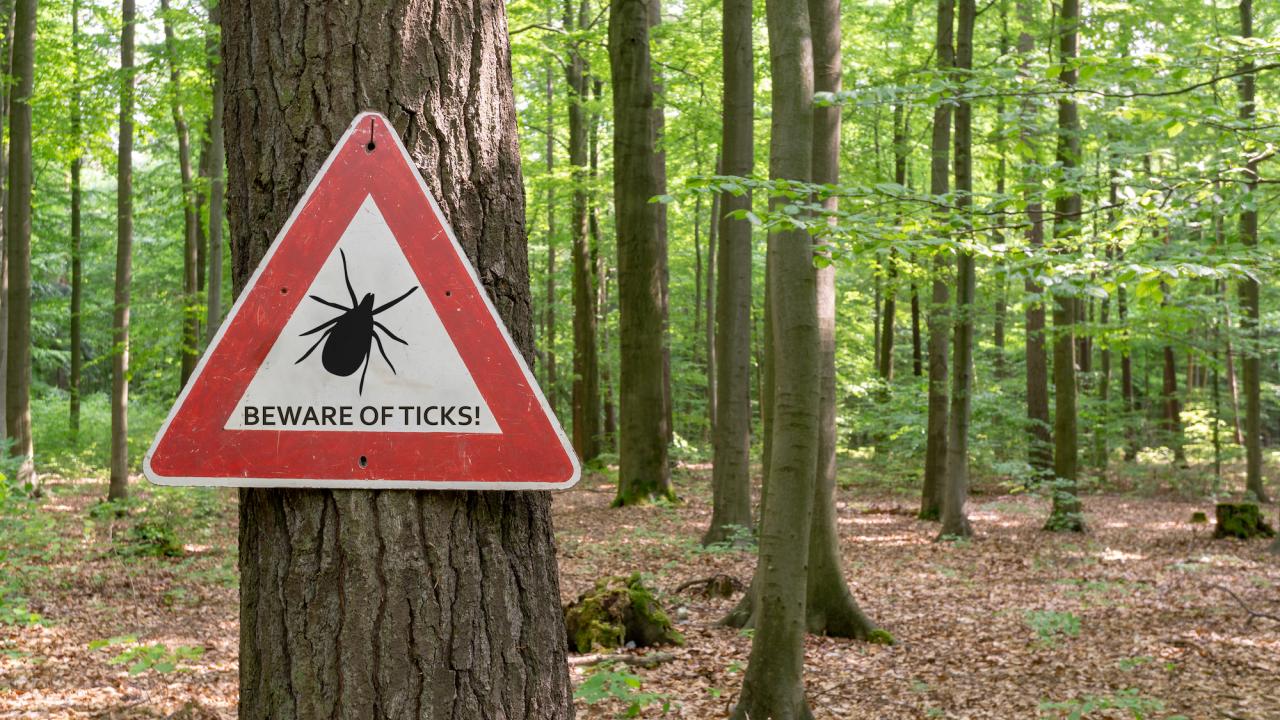Whether it’s relaxing lakeside, exploring vast forests or hiking through the mountains, the warm weather draws major crowds to some of our favorite outdoor locations. But we’re not the only ones flocking to these locations this summer.
As climate change warms the landscape, it opens a door for some disease-carrying bugs, like ticks and mosquitoes (arthropods, collectively), to march into unchartered territories. Just a few degrees can mean the difference between the presence or absence of some insects in your neighborhood, and can increase how often they reproduce.
For instance, an epidemic in Mexicali, Mexico of Rocky Mountain spotted fever is raising concerns that the deadly tickborne disease could move north as the planet warms. The disease’s host tick species thrives in hot, arid environments.
Many of us have heard of the emergence of Zika virus, which has recently been introduced into North America. “When we try to control a human outbreak, like Zika, we are controlling it in humans very well,” said Pranav Pandit, a postdoctoral scholar with the UC Davis One Health Institute’s EpiCenter for Disease Dynamics in the School of Veterinary Medicine and lead author of a study about emerging flaviviruses. “But we don’t know how it’s impacting the wildlife, though they can act as reservoirs for these viruses.”
So no matter how well we control the spread of these diseases from human to human, managing the spread through wildlife remains a challenge.
While many arthropod species are rarely noticed, some reach episodic outbreak levels, causing widespread disturbances. As climate continues to change, and temperatures increase, we can expect more outbreaks and more disturbances.
That may not exactly be the most encouraging news, especially when planning that summer vacation. There are, however, a number of ways to reduce encounters with pesky pests while also doing your part to help the environment.
1) Know before you go

The Great Outdoors is vast and diverse. Knowing your terrain before you head out could save you and your pets from any number of bug bites. (Getty Images)
Pests like ticks and mosquitoes tend to frequent particular areas more often than others. Knowing your terrain before you head off into the wilderness could save you and your pets from a litany of bug bites.
2) Avoid or remove standing water
Aedes aegypti is known as a “container-breeding mosquito,” because it lays its eggs in and around standing water. You can keep mosquitoes from laying eggs inside and outside of your home by routinely checking for areas and containers that can hold standing water and emptying them.
3) Tick tactics

Tick exposure can occur at any time of the year, but ticks are most active during warmer months (April through September). (Getty Images)
Ticks will often climb to approach the food they want — human and animal blood — but only to the height of the animal they’re hoping to feed from. That means you’re likely to find ticks closer to the ground where they might find mice, and in brush or tall grass, where they might find larger mammals such as humans, dogs, and deer. Reducing the amount of time spent in potentially tick-infested habitats, reducing leaf litter and removing tall grass can mitigate encounters with ticks around your home. Walking as close to the center of trails can help you avoid contact with the vegetation upon which ticks perch.
Treating cats and dogs with a monthly acaricide to kill fleas and ticks can also reduce the spread of tickborne diseases and protect your pets’ health. For example, for a Rocky Mountain spotted fever epidemic study in Mexico, UC Davis School of Veterinary Medicine disease ecologist Janet Foley and colleagues found that while 80 percent of residents had heard of the disease, fewer than half used pesticides to prevent bites.
“People are fascinated by vector-borne diseases but may assume they themselves will never be infected,” Foley said. “Not to create too much paranoia, but some of these diseases can be fatal or life-altering. It’s so important that people learn about the risks and understand that we can reduce them.”
4) Which insect repellents to use

Apply and re-apply a repellant according to the label instructions. Not following the label instructions could result in a product not as effective as you might expect. (Getty Images)
Insect repellents registered by the EPA can be expected to repel many of these hosts, provided the labeling indicates it. Such repellents should be part of a comprehensive strategy, though, used to control pests that transmit diseases such as Dengue, Zika and Lyme disease.
5) Avoid bug bites
What’s the most effective way to avoid an arthropod-borne disease? Avoid getting bit, right? Seems pretty straightforward, of course, but remembering to wear long-sleeved shirts, long pants and/or high boots can be an effective deterrent. It also helps to tuck shirts into pants and pants into socks to cover gaps in clothing where pests can get into tiny crevices. Wear light-colored clothing, too, so you can find those dark-colored bugs more easily when they land on you.
Media Resources
Josh Staab is a web editor and digital content strategist with UC Davis Strategic Communications.
